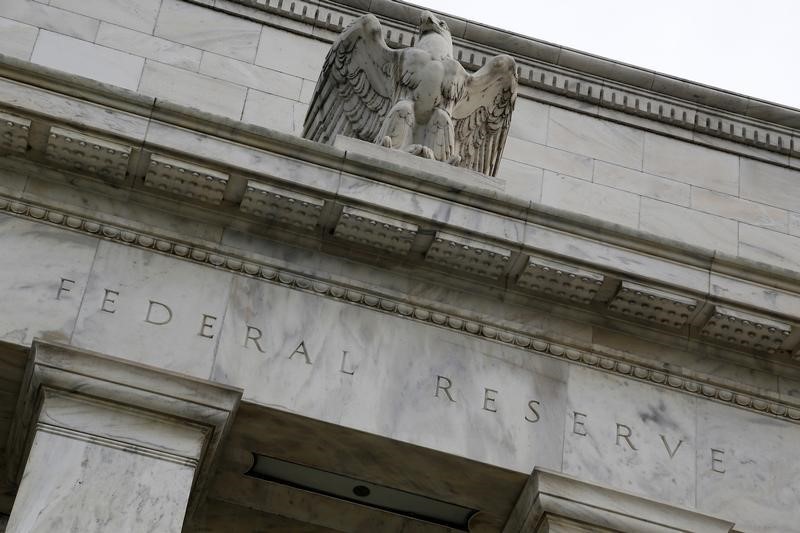(Bloomberg) -- The initial wave of emergency lending programs opened during the coronavirus crisis by the Federal Reserve saw little to no new borrowing last week, a sign of how effective they’ve been at drawing traditional lenders back into U.S. money markets.
Loans outstanding declined $3.7 billion to a combined $80.3 billion in the seven days ending April 22 from two facilities designed to provide liquidity to money market funds and large banks known as primary dealers, according to data released by the Fed on Thursday.
Another program that opened April 14 to make purchases in the $1.1 trillion commercial paper market reported an underwhelming $2.7 billion in loans outstanding.
‘Good News’
“This is unqualified good news that these things haven’t been used a ton,” said Roberto Perli, a former Fed economist and partner at Cornerstone Macro LLC in Washington. “The Fed’s reaction has been quick and wide-reaching, and it’s given confidence to investors to provide liquidity in various corners of the market.”
The U.S. central bank is getting high marks so far for keeping the foundations of the financial system -- markets for U.S. Treasuries, mortgage-backed securities, commercial paper and other high-quality, short-term debt -- functioning after they tilted toward collapse in mid-March, as investors scrambled to turn even the safest securities into cash.
The Fed has since added six more programs, extending support to corporate credit, municipalities and small businesses in an unprecedented effort to keep credit flowing. Most of these facilities are not yet operational.
In many cases, the impact on markets arrived even before emergency programs opened. The Money Market Mutual Fund Liquidity Facility -- MMLF for short -- was announced March 18, a Wednesday, and was opened for business by the Boston Fed on Monday, March 23. Even before that, money fund managers reported an impact on prices they could get when selling assets into the market.
Announcement Bounce
“That Thursday, when the program was not yet operational, absolutely we noticed it,” said Deborah Cunningham, chief investment officer for global money markets at Federated Hermes Inc. in Pittsburgh.
Cunningham added that the Primary Dealer Credit Facility, which opened on March 20, also helped money funds by freeing up bank balance sheets so they could resume trading in money markets. By the end of their first full week operating, she said, the MMLF and PDCF had done their work and confidence slowly broadened.
While government-only money funds remained stable, so-called prime funds, which invest in a broader range of short-term securities, including corporate IOUs, saw a combined $161 billion in withdrawals from retail and institutional customers in the three weeks starting March 9 and ending March 27, according to Crane Data LLC.
By March 26, net daily flows to prime institutional funds had turned positive, and by early April they were strongly positive. Retail funds followed close behind.
Less Stress
Meanwhile, funding stress has lessened in the past two weeks across a number of markets. The yield spread that investors demand to hold asset-backed commercial paper over overnight-index swaps has shrunk by 129 basis points since reaching an 11-year high of 197 basis points on March 23. Three-month dollar Libor, the benchmark for short-term interbank lending rates, on Thursday fell below 1% for the first time in more than a month.
The Fed’s emergency programs come atop their decision in mid-March to absorb massive amounts of Treasury bonds and MBS. Those purchases boosted the Fed’s assets by $1.64 trillion as of April 22.
One key measure of the Treasury market’s liquidity, the ICE (NYSE:ICE) BofA MOVE Index, an options-based gauge of implied volatility, shows trading has returned to near-normal levels. MBS purchases have lifted sector returns versus Treasuries 1.23 percentage points, as of April 23.
The successes don’t mean credit markets are back to normal, and they won’t prevent the pandemic from ravaging the economy. But it does mean the Fed averted a seizure in the flow of credit that could have made the economic impact of the pandemic significantly worse.
“Gauging success of these programs is more nuanced than simply looking at take-up,” said Jon Hill, a strategist at BMO Capital Markets in New York. “Clearly the system is still healing, but it’s no longer crisis-level conditions. Things break fast and heal slow.”
©2020 Bloomberg L.P.
